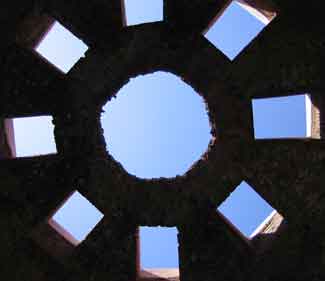Mr. Justice David Brown in York U. v Markicevic 2013 ONSC 4311
Duhaimes Real Estate and Tenancy Law Dictionary
Otherwise stated, as described in the 2007 edition of the
Always looking up definitions? Save time with oursearch provider(modern browsers only)
InBack v Stacey, quoted inColls v Home & Colonial, the Court wrote:
The template you are linking to has no template configured yet.
A complainant must have the right to ancient lights before that person can object to an obstruction (of light), and the obstruction must be substantial.
, 4th Edition (Toronto: Carswell, 2007), page 98.
The owner of an ancient light may increase the size of windows through which he has enjoyed the light or open new windows. But he will acquire no right to light for so much of an existing window as in an enlargement, or for a new window, until a new period of 20 years has run; and at any time within such period the owner of adjoining land may erect a screen which prevents the access of light to the enlargement or new window and may so prevent a further right being added to the existing right.
Under the general common law ofnuisance, no one can complain of a sudden or unannounced obstruction of a long-standing source of light unless the light is said to be ancient, as in ancient lights.
Maintenance of the cohesion of our civil society depends, in significant part, upon ensuring that those in society who have legal disputes enjoy access to the public civil justice system in order to secure an adjudication of those disputes…. Lack of access to justice puts us on the road to unwinding the weave which holds our civil society together.
, 2nd Ed., Vol. 1 (London: Sweet & Maxwell, 1977), page 101
To some common law sources, ancient lights is a species ofeasement. InKelk v Pearson, Justice James wrote of ancient lights as an easement:
Duhaimes Tort and Personal Injury Law Dictionary
The question … is whether the effect of the defendants building is to diminish the light … so sensibly to affect the occupation of the plaintiffs premises and make them less fit for occupation.
Jowitts sets out the law as follows:
… a right to prevent your neighbour from building on his land so as to obstruct the access of sufficient light and air to such an extent as to render the house substantially less comfortable and convenient.
Windows, glazed or unglazed, through which the access of light has been enjoyed otherwise by consent or permission for twenty (20) years and upwards.
Unless otherwise noted, this article was written by Lloyd Duhaime, Barrister, Solicitor, Attorney and Lawyer (and Notary Public!). It is not intended to be legal advice and you would be foolhardy to rely on it in respect to any specific situation you or an acquaintance may be facing. In addition, the law changes rapidly and sometimes with little notice so from time to time, an article may not be up to date. Therefore, this is merely legal information designed to educate the reader. If you have a real situation, this information will serve as a good springboard to get legal advice from a lawyer.
An opening through which light has flowed uninterrupted for twenty years and which can, in some circumstances, support a claim for nuisance if blocked.
… there must be a substantial privation of light, sufficient to render the occupation of the house uncomfortable…. It might be difficult to draw the line but the jury must distinguish between a partial inconvenience and a real injury to the plaintiff in the enjoyment of the premises.
The law as it relates to nuisance generally, and to ancient lights specifically, is subject to statute law which, in any given jurisdiction, may alter the common law.
If you find an error or omission in Duhaimes Law Dictionary, or if you have suggestion for a legal term, wed love tohear from you!
